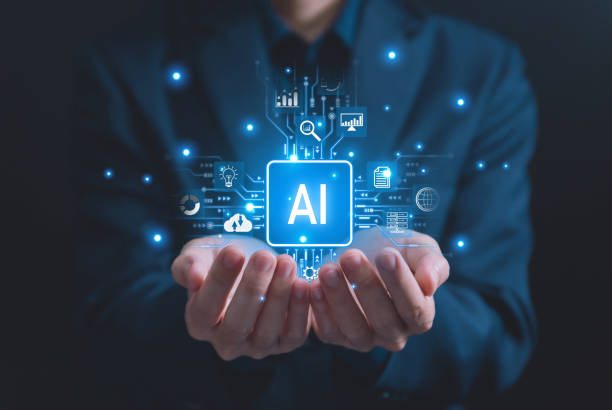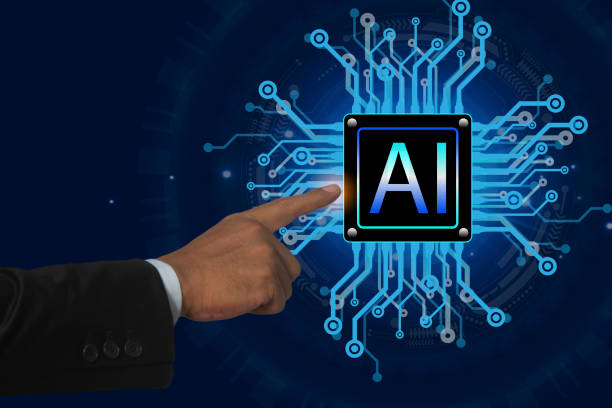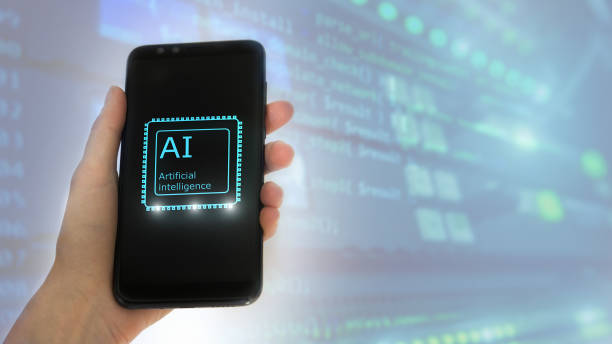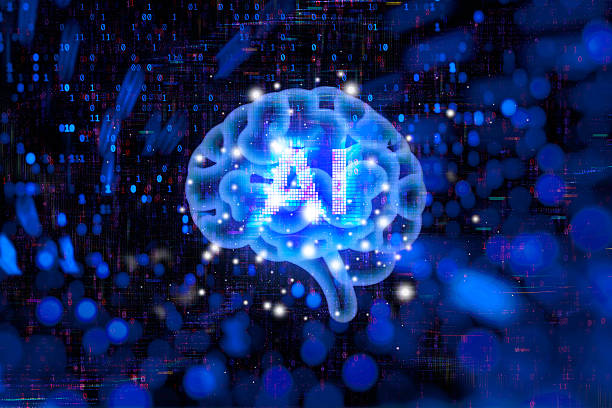What is an AI Robot? Definition, History, and Types

An Artificial Intelligence Robot (AI Robot) is a combination of two important technological fields: Artificial Intelligence (AI) and Robotics.
Simply put, an AI robot is a physical or software robot that, with the help of artificial intelligence algorithms, is capable of performing tasks that usually require human intelligence.
These tasks can include learning, reasoning, problem-solving, pattern recognition, and decision-making.
The history of AI robots dates back decades, when researchers tried to build machines that could think and act.
Early efforts focused primarily on programming robots to perform specific tasks, but with the advancement of artificial intelligence, robots became capable of learning and adapting to new environments.
The types of AI robots are very diverse and include industrial robots, service robots, medical robots, military robots, and virtual robots (chatbots).
Each of these robots is designed to perform specific tasks and uses different artificial intelligence algorithms.
AI robot technology is rapidly advancing, and it is expected to play a more significant role in our lives in the future.
Are you tired of your e-commerce website not generating as much revenue as it could? Rasawweb, specializing in professional e-commerce website design, solves this problem permanently!
✅ Increase sales rate and revenue
✅ High loading speed and unparalleled user experience
⚡ Get free consultation for e-commerce website design
Architecture and Main Components of an AI Robot

An Artificial Intelligence Robot (AI Robot) consists of several main components that work together to enable intelligent task execution.
These components include sensors, actuators, controllers, and artificial intelligence algorithms.
Sensors are responsible for collecting information from the surrounding environment.
This information can include images, sounds, temperature, pressure, and other sensory data.
Actuators are responsible for performing physical actions.
This action can include movement, grasping objects, speaking, or performing any other physical activity.
Controllers are responsible for processing the information collected by sensors and sending commands to the actuators.
Controllers usually consist of a computer or microcontroller.
Artificial intelligence algorithms are the intelligent brain of the robot, responsible for learning, reasoning, problem-solving, and decision-making.
These algorithms can include neural networks, machine learning algorithms, and planning algorithms.
The interaction between these components allows the AI robot to interact with its environment and perform complex tasks.
For example, an AI robot can use its sensors to detect an object, use AI algorithms to determine the appropriate path to grasp that object, and use its actuators to pick up the object.
Applications of AI Robots in Various Industries

Artificial Intelligence Robots (AI Robots) have wide-ranging applications in various industries and are increasingly replacing human labor in many tasks.
In the manufacturing industry, AI robots are used for repetitive and dangerous tasks such as welding, painting, and packaging.
These robots can work with higher precision and speed than humans, leading to increased productivity and reduced costs.
In the healthcare industry, AI robots are used for performing precise surgeries, assisting patients, and caring for the elderly.
These robots can perform very precise movements using sensors and AI algorithms, helping doctors in complex surgeries.
In the transportation industry, AI robots are used for autonomous driving, goods delivery, and traffic management.
These robots can drive safely and efficiently using sensors and AI algorithms, leading to a reduction in accidents and improved traffic flow.
AI robot technology is transforming various industries and is expected to play a more significant role in the global economy in the future.
| Industry | Applications |
|---|---|
| Manufacturing | Welding, Painting, Packaging, Assembly |
| Healthcare | Surgery, Patient Care, Drug Delivery |
| Transportation | Autonomous Driving, Goods Delivery, Traffic Management |
Advantages and Disadvantages of Using AI Robots
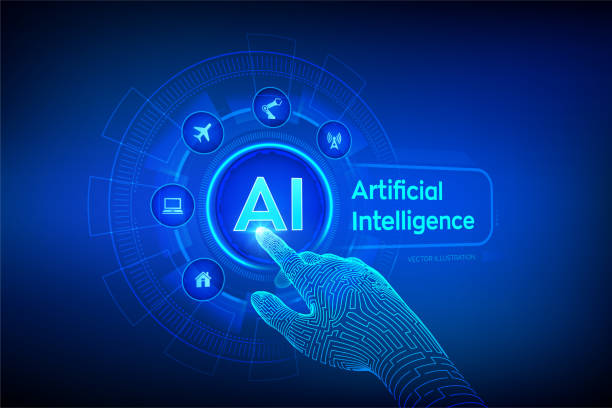
The use of Artificial Intelligence Robots (AI Robots) has numerous advantages and disadvantages that should be considered before adopting this technology.
The advantages of using AI robots include increased productivity, reduced costs, improved accuracy and safety, performing dangerous and repetitive tasks, and the ability to work in harsh conditions.
AI robots can work continuously and tirelessly, leading to increased productivity and reduced costs.
Additionally, these robots can work with higher precision than humans, resulting in fewer errors and improved quality.
The disadvantages of using AI robots include high setup and maintenance costs, the need for technical expertise, potential job displacement, and ethical concerns.
Setting up and maintaining AI robots requires significant investment and technical expertise.
Furthermore, the use of AI robots can lead to unemployment for some individuals.
In addition, there are ethical concerns regarding the use of AI robots, such as accountability in case of errors and the use of these robots in warfare.
How much does losing business leads due to an unprofessional website cost you? Solve this problem permanently with professional corporate website design by Rasawweb!
✅ Increase credibility and trust of potential customers
✅ Easier attraction of new business leads
⚡ Get free consultation now!
The Future of AI Robots: Prospects and Challenges

The future of Artificial Intelligence Robots (AI Robots) is very bright and full of potential.
With rapid technological advancements, AI robots are expected to play a more significant role in our lives in the future.
In the future, AI robots can assist us in various fields such as medicine, education, agriculture, transportation, and customer services.
These robots can perform more complex tasks using advanced AI algorithms and help us solve various problems.
However, the development and use of AI robots also come with challenges.
One of the most important challenges is ensuring the safety and security of AI robots.
Robots must be designed in a way that prevents misuse and avoids harm to humans and the environment.
Another challenge is addressing ethical issues related to the use of AI robots.
Regulations must be established to govern the use of AI robots and protect human rights.
Despite these challenges, the future of AI robots is very promising, and this technology is expected to play a crucial role in improving our lives in the future.
How Does an AI Robot Work?
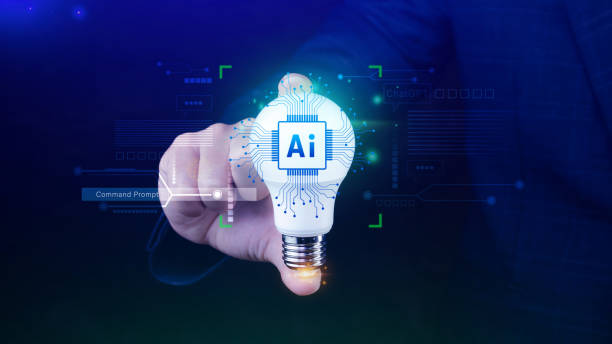
The functioning of an Artificial Intelligence Robot (AI Robot) involves several key stages.
First, the robot collects information from its surroundings using its sensors.
This information can include images, sounds, temperature data, pressure, or any other type of sensory data.
Then, this information is sent to a processing system, which is usually a computer or microcontroller.
In this system, artificial intelligence algorithms are used to analyze and interpret the information.
AI algorithms can include neural networks, machine learning algorithms, and planning algorithms.
After analyzing the information, the robot makes a decision and sends commands to its actuators.
Actuators are responsible for performing physical actions.
This action can include movement, grasping objects, speaking, or performing any other physical activity.
This entire process is continuously repeated, and the robot constantly interacts with its environment.
For example, an AI robot designed to clean a room can use its sensors to detect the location of objects, use AI algorithms to determine the appropriate path for cleaning the room, and use its actuators to clean the room.
Types of AI Algorithms Used in Robots
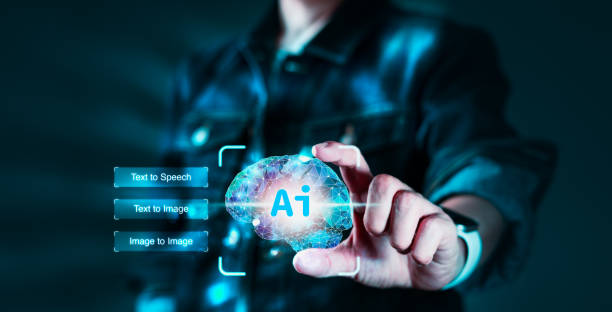
Artificial Intelligence Algorithms (AI Algorithms) play a very important role in the performance of AI robots.
There are various types of AI algorithms used in robots, including neural networks, machine learning algorithms, planning algorithms, and search algorithms.
Neural networks are a type of machine learning algorithm inspired by the structure of the human brain.
These networks can recognize patterns in data and be used for classification, prediction, and pattern recognition.
Machine learning algorithms enable robots to learn from data and improve their performance.
These algorithms can be used for learning new tasks, adapting to new environments, and solving complex problems.
Planning algorithms enable robots to create plans to achieve specific goals.
These algorithms can be used for navigation, motion planning, and resource management.
Search algorithms enable robots to look for suitable solutions in large and complex spaces.
These algorithms can be used for optimization problems, playing games, and decision-making.
The selection of the appropriate algorithm depends on the specific task the robot needs to perform.
AI Robot.
| Algorithm Type | Application |
|---|---|
| Neural Networks | Pattern Recognition, Classification, Prediction |
| Machine Learning | Learning New Tasks, Environmental Adaptation |
| Planning | Navigation, Motion Planning |
| Search | Optimization, Game Playing, Decision-Making |
The Impact of AI Robots on the Job Market

The impact of Artificial Intelligence Robots (AI Robots) on the job market is a complex and controversial topic.
On one hand, AI robots can increase productivity and reduce costs by automating tasks.
This can lead to the creation of new job opportunities in areas related to the development, maintenance, and use of AI robots.
On the other hand, AI robots can cause unemployment by replacing human labor in many tasks.
This can be particularly problematic for individuals working in repetitive and low-skilled jobs.
To address this challenge, appropriate training and retraining programs should be provided to help individuals learn new skills and adapt to changes in the job market.
Additionally, policies must be adopted to protect workers’ rights and prevent the creation of social inequalities.
AI robot technology is transforming the job market, and success in this market requires learning new skills and adapting to changes.
Don’t have a corporate website yet and missing out on online opportunities? With professional corporate website design by Rasawweb,
✅ Double your business credibility
✅ Attract new customers
⚡ Free consultation for your corporate website!
Ethical Challenges in the Development and Use of AI Robots
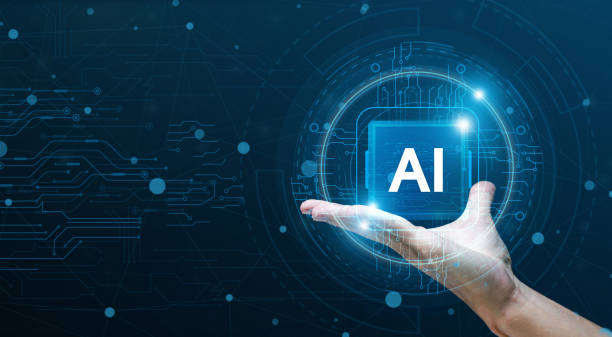
The development and use of Artificial Intelligence Robots (AI Robots) bring several ethical challenges.
One of the most important challenges is the issue of accountability.
If an AI robot makes a mistake and causes harm, who will be responsible? The robot’s manufacturer, programmer, user, or the robot itself? These questions do not have simple answers and require careful discussion and consideration.
Another challenge is the issue of privacy.
AI robots can collect a lot of information about us, including personal data, financial information, and health-related data.
How can this information be protected, and how can its misuse be prevented? Another issue is discrimination.
AI algorithms can unintentionally be discriminatory and lead to social inequalities.
How can this be prevented, and how can we ensure that AI robots treat all individuals fairly? These challenges require serious attention and must be addressed before AI robots are widely used in society.
AI Robot.
Educational and Learning Resources for AI Robots
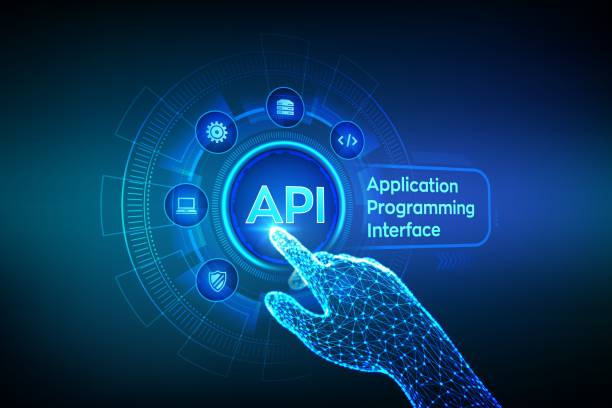
If you are interested in learning about Artificial Intelligence Robots (AI Robots), many educational and learning resources are available to you.
You can use books, online courses, websites, articles, and conferences to learn about AI robots.
Some well-known books on AI robots include “Artificial Intelligence: A Modern Approach” by Stuart Russell and Peter Norvig, and “Hands-On Intelligent Agents with OpenAI Gym” by Abhishek Nagarajan.
Many online courses on AI robots are offered on platforms such as Coursera, edX, and Udacity.
Some useful websites about AI robots include Artificial Intelligence Journal and Journal of Robotics and Automation.
You can also stay informed about the latest developments in this field by attending conferences related to AI robots.
Some well-known conferences on AI robots include the International Conference on Robotics and Automation (ICRA) and Robotics Science and Systems (RSS).
By utilizing these resources, you can expand your knowledge of AI robots and become an expert in this field. AI Robot.
Frequently Asked Questions
| Question | Answer |
|---|---|
| What is an AI robot? | It is a robot that uses artificial intelligence capabilities for environmental perception, reasoning, learning, and decision-making to perform complex tasks autonomously. |
| What is the main difference between a regular robot and an AI robot? | AI robots can learn and adapt to their environment, while regular robots typically operate based on fixed, pre-programmed instructions. |
| In what areas are AI robots used? | In fields such as industry (production lines), medicine (robotic surgeries), services (customer support, smart vacuum cleaners), exploration (space and underwater), and entertainment. |
| How do AI robots learn? | They acquire new skills through Machine Learning and Deep Learning algorithms, by analyzing large datasets and identifying patterns. |
| Can AI robots have emotions? | Currently, no. They can recognize or simulate emotions, but they do not experience real emotions like humans. |
| What are the most important advantages of using AI robots? | Increased productivity, reduced human error, performance of dangerous or repetitive tasks, and provision of innovative and efficient services. |
| What challenges exist in the development of AI robots? | The need for abundant and high-quality data, algorithmic complexity, ethical issues, cybersecurity, and high research and development costs. |
| Are AI robots dangerous for humans? | No, provided safe design principles and ethical regulations are followed. Concerns are mostly related to social and economic impacts, such as changes in the job market. |
| What is an example of an AI robot in everyday life? | Smart robotic vacuum cleaners (like Roomba) that autonomously map and clean homes, or intelligent voice assistants (like Siri and Alexa). |
| How is the future of AI robots predicted? | They are expected to become smarter, more autonomous, and capable of more complex interactions with humans, playing a more prominent role in industry, medicine, transportation, and daily life. |
And other services of RasaWeb Advertising Agency in the field of advertising
- Smart Link Building: A creative platform for improving SEO ranking with attractive UI design.
- Smart Advertorials: A professional solution for increasing sales with a focus on precise target audience segmentation.
- Smart Advertorials: A professional solution for analyzing customer behavior with a focus on intelligent data analysis.
- Smart SEO: An effective tool for campaign management with the help of SEO-centric content strategy.
- Smart Data Analysis: Professional optimization for campaign management using attractive UI design.
And over a hundred other services in the field of internet advertising, advertising consultation, and organizational solutions.
Internet Advertising | Advertising Strategy | Advertorials
Sources
What are Smart Robots and What are Their Applications?
What is Artificial Intelligence and What are its Applications?
Types of Smart Robots
Investigating the Applications of Artificial Intelligence in Robotics and Automation
RasaWeb Afarin, your smart companion in the digital world, with services such as responsive website design and SEO optimization, elevates your business to new heights.
📍 Tehran, Mirdamad Street, next to Bank Markazi, Kazeroon Jonubi Alley, Ramin Alley, No. 6

